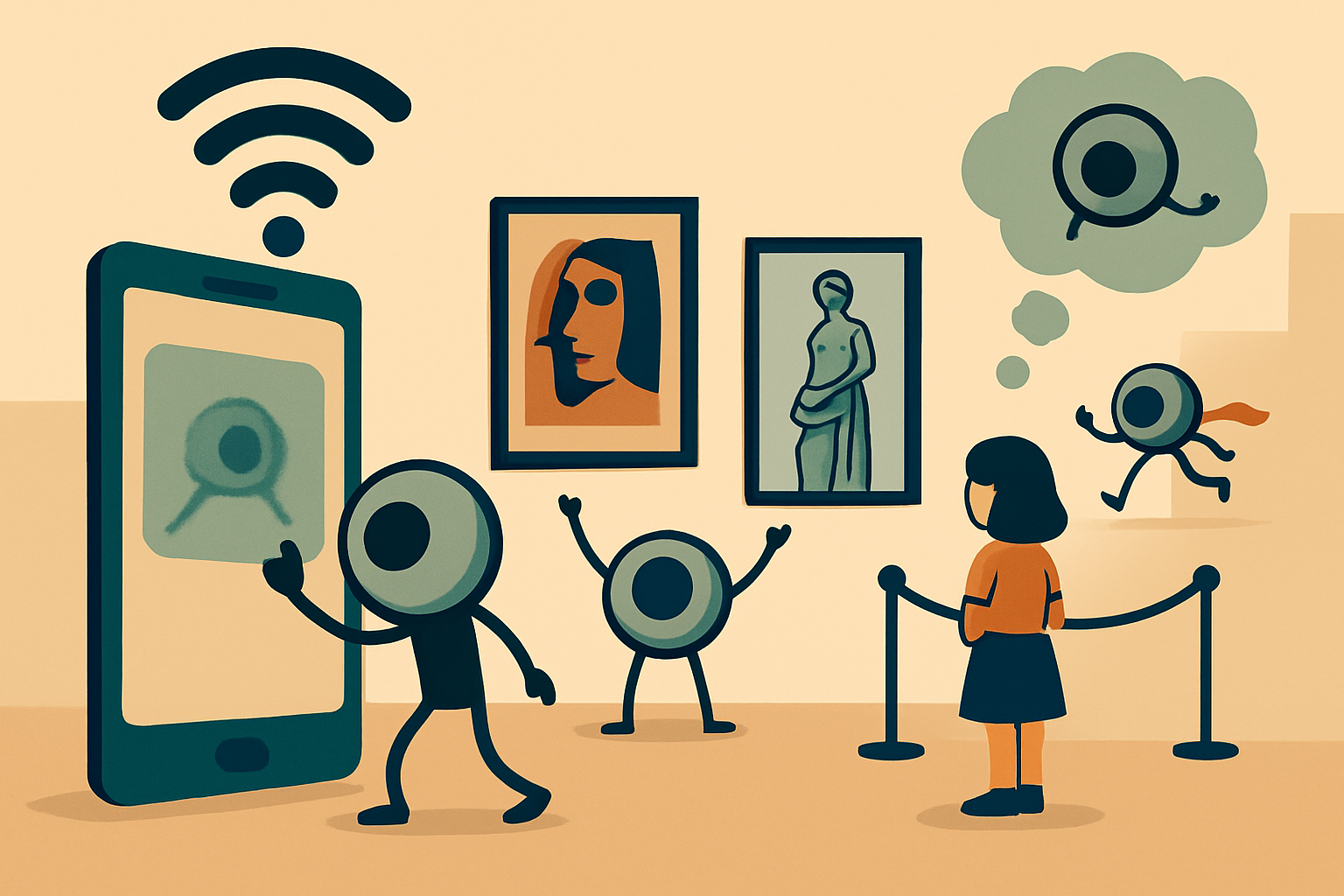
We all know how easy it is to get distracted while learning—someone talks, a notification pings, or you just feel tired. Rosales et al. studied this “interruption factor” and explained that our brains have limits, so even brief breaks can slow us down or cause us to forget what we were doing. Their idea is simple: instead of blaming you for losing focus, design the tech around you to notice what’s happening and adjust in real time to keep you engaged. In their model, the “computer” acts like a helpful teacher that watches how close you are and how active you seem, then picks the right kind of content to pull you back in.
They tested this in a youth-focused museum in Tijuana. Picture a room where you can “drive” a car, fly a plane, ride a bike, or float a balloon on four screens. Kids and teens rotate through, play, and learn hand–eye coordination and spatial skills. While visitors play, the system quietly tracks two key signals: your interaction level (how engaged you are) and your distance from the exhibit (are you right there or drifting away?). Then it serves what fits best—audio if you’re far away and have low energy, graphics or text if you move closer and engage more, and video when you’re fully invested. It’s like a ride that adjusts its speed to match your mood, so you don’t bail out.
Here’s the cool part: this adaptive approach works. In their sample of 500 visitors, the system most often chose text (32%), followed by graphics (27%), audio (21%), and video (20%). That mix shows that “more video” isn’t always the answer—sometimes a short, clear text prompt is the best nudge to keep you going. The team also notes that not every interruption is bad. If the side content is related to what you’re doing, you can bounce back faster; if it’s unrelated, your performance can tank, and you might abandon the task. The fix is to resume with content that matches where you left off, which helps your brain “pick up the thread” quickly.
So, what does this mean for your day-to-day activities? When a study app, a museum exhibit, or even a school website offers choices—audio, graphics, text, or video—pick what fits your energy and distance from the task right now. If you’re tired or stepping away, listen. When you’re seated and focused, skim a short text or watch a quick clip to lock in the idea. And if you’re interrupted, don’t restart from scratch; resume with a small, well-matched piece of content to reconnect your thoughts. That’s the heart of Rosales et al.’s message: smart tools that adapt to you can make learning smoother, kinder, and more effective—even on a busy day.
Reference:
Rosales, R., Castañón-Puga, M., Lara-Rosano, F., Evans, R. D., Osuna-Millan, N., & Flores-Ortiz, M. V. (2017). Modelling the interruption on HCI using BDI agents with the fuzzy perceptions approach: An interactive museum case study in Mexico. Applied Sciences (Switzerland), 7(8), 1–18. https://doi.org/10.3390/app7080832
